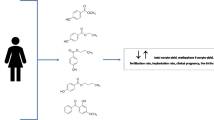Abstract
Environmental chemicals are thought to adversely affect human reproductive function, however there are no studies that have explored the association between failed fertilization and exposure of both partners to environmental contaminants. Therefore, we collected blood and follicular fluid from the female partner and seminal plasma from the male partner of 21 couples attending an in vitro fertilization (IVF) program, in order to determine the extent of the existence of environmental chemicals in these fluids. Any relationship to the outcome of IVF was also considered. Sera and fluids were analysed for a variety of contaminants, including polychlorinated biphenyls, pesticides, cotinine, and the steroids progesterone and estradiol. Of the couples examined, 18 had fertilizations, three of whom became pregnant. There were no fertilizations in three other couples. The contaminants most frequently found in follicular fluid, more than 50% of the samples tested, were p,p′-DDE, mirex, hexachloroethane, 1,2,4-trichlorobenzene, PCB 49, PCB 153, and PCB 180. Cadmium was detected in eight of 21 (38.1%) samples of follicular fluid whereas cotinine was detected in 18 (85.7%). Residue levels of p,p′-DDE, endosulfan I, PCB 99, PCB 138, PCB 153, PCB 180 were quantified in more than 50% of the sera samples examined. Seminal plasma was relatively free of pollutants with mirex being the most frequently detected contaminant found in seven of 21 (33.3%) samples. Mirex could not be detected in the seminal plasma of the husbands whose partner's oocytes failed to fertilize whereas significant levels of mirex were found in the seminal plasma of all couples who had a pregnancy. Cadmium was also found in the follicular fluid of these pregnant subjects. No relationship was found between follicular fluid cotinine in pregnant and non-pregnant subjects. Where identical contaminants were found in both sera and follicular fluids, the levels were about twofold higher in serum and were positively correlated in both fluids. Fertilization was negatively correlated with serum and follicular fluid p,p′-DDE whereas pregnancy was positively correlated with follicular fluid PCB 49. These data reveal that more than 50% of the population of women attending a fertility program have had exposure to environmental chemicals sufficient to produce detectable concentrations in their serum and ovarian follicular fluid. Of the chemical contaminants detected in the serum and follicular fluid of these women, p,p′-DDE was the most frequently detected, had the highest residue levels, and was associated with failed fertilization.
Similar content being viewed by others
Author information
Authors and Affiliations
Additional information
Received: 8 September 2001/Accepted: 21 December 2001
Rights and permissions
About this article
Cite this article
Younglai, E., Foster, W., Hughes, E. et al. Levels of Environmental Contaminants in Human Follicular Fluid, Serum, and Seminal Plasma of Couples Undergoing In Vitro Fertilization. Arch. Environ. Contam. Toxicol. 43, 121–126 (2002). https://doi.org/10.1007/s00244-001-0048-8
Issue Date:
DOI: https://doi.org/10.1007/s00244-001-0048-8



